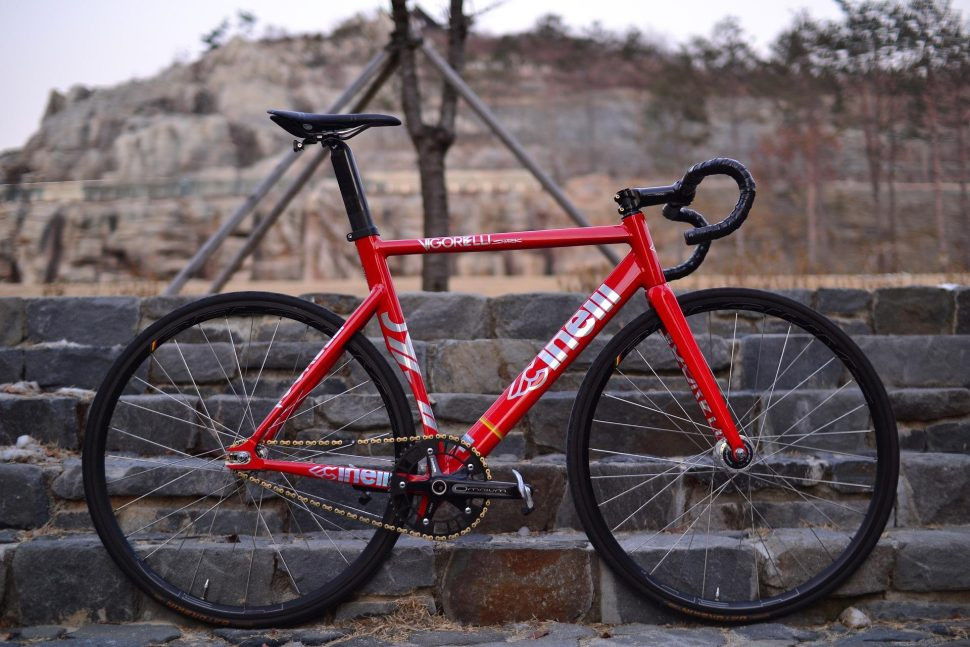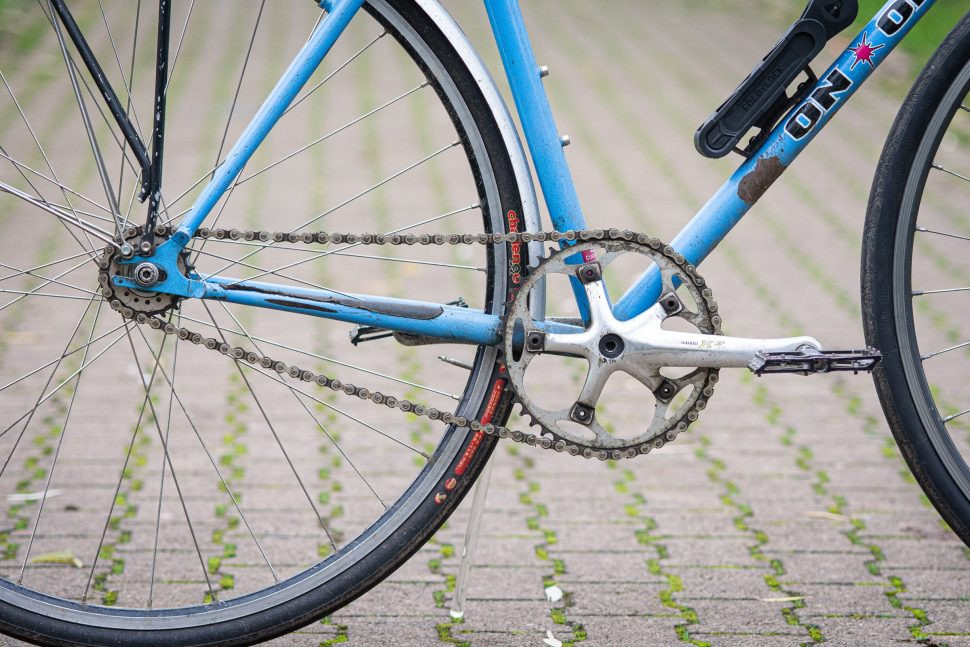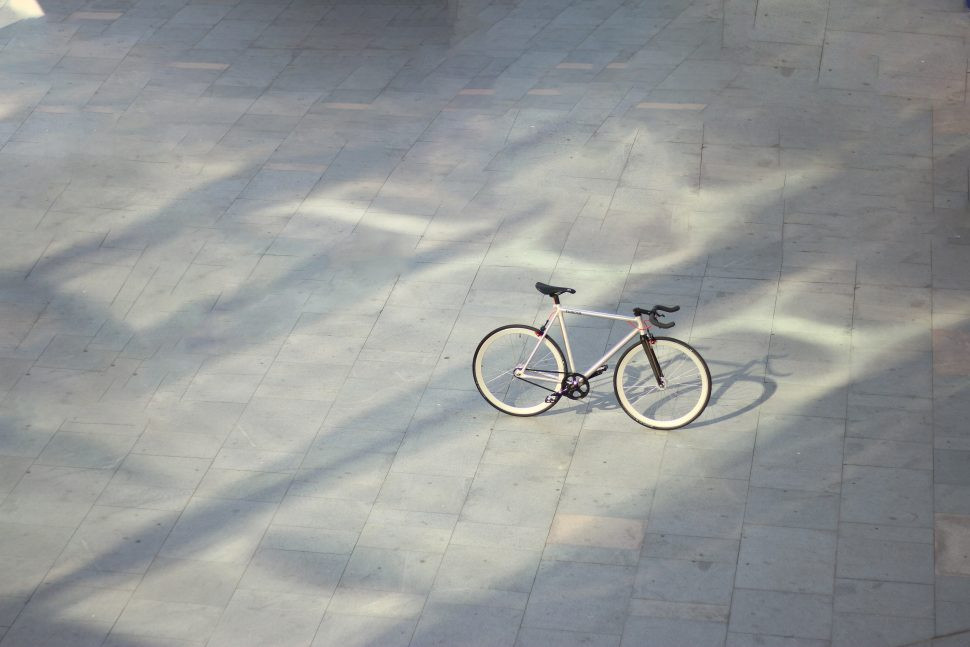Henri Desgrange, the founder of the Tour de France, famously resisted geared bicycles, proclaiming them unnecessary until 1937. His sentiment, “Isn’t it better to triumph by the strength of your muscles than by the artifice of a derailleur?” resonates even today. Inspired by this purist ethos, I embarked on my own single-speed journey. After years accustomed to the nuances of shifters and derailleurs, the transition to a single speed felt like a return to the raw essence of cycling – just me, one gear, and the open road.
A New Perspective on Riding
Switching to a single-speed bike necessitates a fundamental shift in how you approach cycling. Suddenly, the terrain and the weather command a newfound respect. You can no longer casually spin your way up a hill or power through a headwind with the aid of lower gears. Cadence becomes crucial; there’s no middle ground, it’s either full effort or nothing at all.
As cycling coach Tim Williams astutely pointed out, “I expect you’d find your useful limit on a single-speed or fixed pretty quickly, but you definitely need something in the way of ups and downs. And a headwind. Otherwise you’ll want gears to generate some resistance.” This highlights the inherent challenge and focused nature of single-speed riding.
 Condor Classico Pista single speed bike, showcasing its minimalist design ideal for urban cycling.
Condor Classico Pista single speed bike, showcasing its minimalist design ideal for urban cycling.
Adapting Routes and Redefining Limits
My familiar cycling route, a straightforward out-and-back battling a headwind, became unsuitable for the single-speed. Instead, I sought out a circuitous path, characterized by short, sharp climbs, a landscape more befitting the single-geared experience.
My single-speed setup, a 46-18 gear ratio, translates to approximately 68 gear inches, or 5.2 meters of travel per pedal revolution. This new configuration dramatically altered my perception of previously manageable inclines. Hills I once effortlessly spun up now presented a significant challenge, demanding considerable effort. Conversely, descents became a rapid spin-out affair, reaching top speed around 35km/h, a somewhat frustrating limitation.
 Rider on a single speed bike tackling a climb, highlighting the physical demands of single gear cycling.
Rider on a single speed bike tackling a climb, highlighting the physical demands of single gear cycling.
The Practical Appeal: Low Maintenance and Durability
Performance enhancement wasn’t the primary driver behind my single-speed acquisition. My motivation was rooted in practicality. I sought a bicycle that could withstand the harsh conditions of a Scottish winter – the slush, salt, and grime – with minimal maintenance. My inherent laziness and mechanical shortcomings steered me towards the simplicity of fewer moving parts. In this regard, the single-speed delivered perfectly.
 Close-up of a single speed bike wheel, emphasizing the simplicity and robustness of its components.
Close-up of a single speed bike wheel, emphasizing the simplicity and robustness of its components.
Fixed Gear vs. Single Speed: Choosing Your Ride
While embracing the single-speed ethos, I stopped short of opting for a fixed-gear bike. The idea of tackling steep hills with a single gear was appealing, but I still valued the ability to freewheel on descents, without the constant pedaling demanded by a fixie. Not being a dedicated racer or a hipster, the purported training advantages of a fixed gear seemed less relevant to my cycling needs.
However, as Williams explains, fixed-gear bikes do offer specific benefits, particularly for racers: “If you race, you can really improve your bike-handling skills at speed on a fixie… Say you’re riding in a group when you come to some tight corners, potholes or another obstacle – when you’re riding fixed you have to keep pedalling, and that’s very useful training.” He also notes the forced improvement in pedaling technique for fixed-gear riders.
 Fixed gear bike drivetrain, illustrating the direct connection between pedals and wheel for enhanced bike control.
Fixed gear bike drivetrain, illustrating the direct connection between pedals and wheel for enhanced bike control.
Connecting with the Ride: An Earthly Experience
Fixed-gear enthusiasts often describe a feeling of being “at one with the road.” My experience on a single-speed, while perhaps less spiritual, is undeniably more grounded, more “earthly.” Every undulation, every curve in the road becomes significant, assessed for its potential to either aid or hinder momentum, especially when facing an uphill section with no gear changes to rely on.
More profoundly, I’ve developed a stronger connection to the bike itself, an affinity absent with my more complex, geared machine. The smooth click of a shifting derailleur pales in comparison to the sheer satisfaction of conquering a steep incline purely through personal effort. A single sprocket, in its simplicity, feels inherently authentic.
 B'Twin single speed bike, a popular and affordable option for riders seeking simplicity and reliability.
B'Twin single speed bike, a popular and affordable option for riders seeking simplicity and reliability.
Training Benefits and Considerations
Sports scientist Mark Walker, who coached Alex Dowsett for his Hour Record attempt, suggests tangible training benefits to single-speed or fixed-gear riding. “It’s forcing you to train at different levels of cadence and force production,” he explains. “The force-velocity characteristic of your muscles mean that when the velocity is low they can produce a lot of force… If you’re riding a single or fixed-gear up a hill, you slow right down because of the resistance of gravity and you have to produce a lot of force. When you go down you suddenly have to pedal really fast, but you’re not producing a lot of force.”
This variation in force and cadence throughout a ride can be advantageous, potentially addressing imbalances that might arise from focusing solely on high-speed or high-force training on geared bikes.
 Single speed bike crankset, showing the direct power transfer and efficient design of a single gear system.
Single speed bike crankset, showing the direct power transfer and efficient design of a single gear system.
Cautions and Balanced Training
Despite my growing fondness for my single-speed, Williams offers a word of caution. “One of the reasons for having so many gears on your road bike is so that you can be in the right gear as much as possible,” he points out. “Therefore if you’ve got only one gear, you’re probably not in the right gear for much of the time… There’s a risk you are overloading: you are turning your aerobic exercise into anaerobic and giving your knees a hard time. You might get more benefit from structured training using a bike with gears.”
While single-speed riding has injected a renewed “zing” into my cycling routine, it’s perhaps best employed as a supplementary tool rather than a sole training method.
 Cyclist riding a single speed bike on a scenic road, suggesting the enjoyable and engaging experience despite the challenges.
Cyclist riding a single speed bike on a scenic road, suggesting the enjoyable and engaging experience despite the challenges.
Conclusion
My single-speed bike was initially intended as a low-maintenance winter option. However, the connection I’ve forged with it has me contemplating its use year-round. Despite enduring the wind, rain, and snow of a typical Scottish winter, the last thousand miles on this simple machine have rekindled the pure joy of cycling. I believe Monsieur Desgrange, in his appreciation for cycling in its most unadulterated form, would approve.

